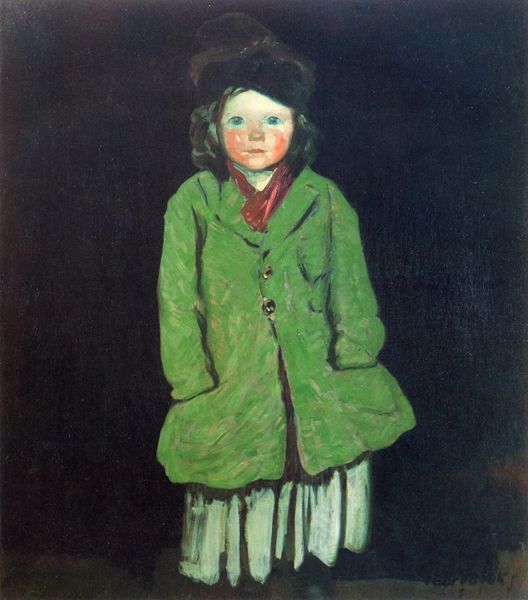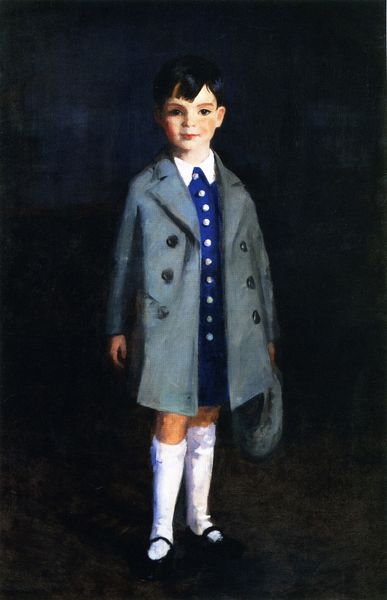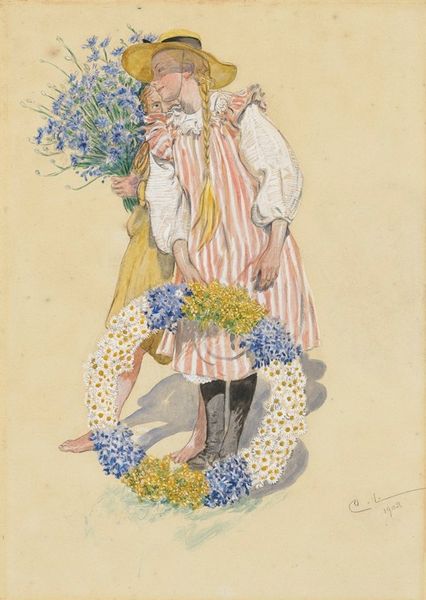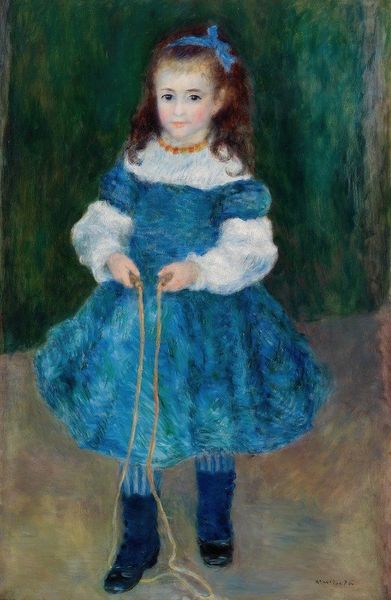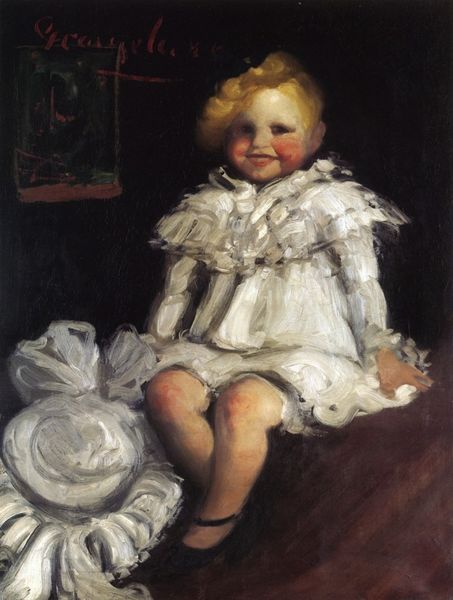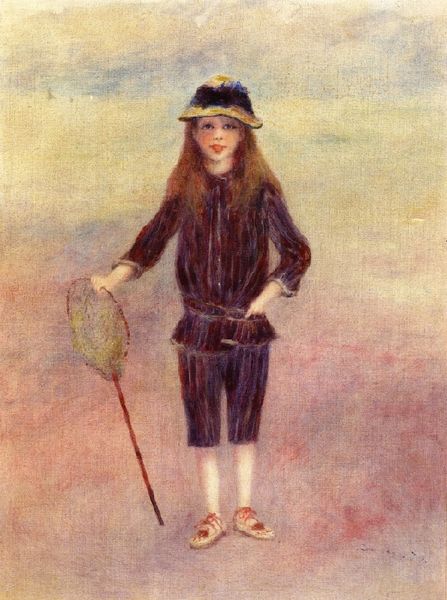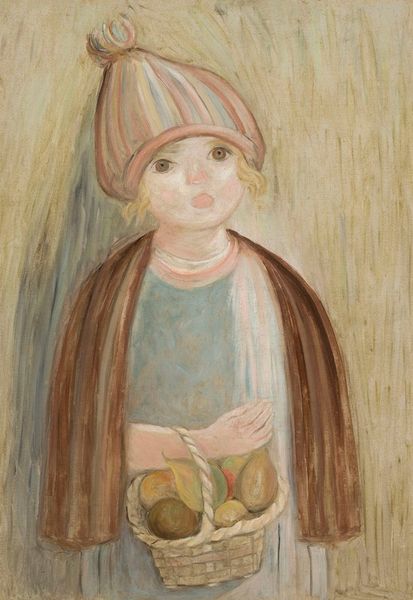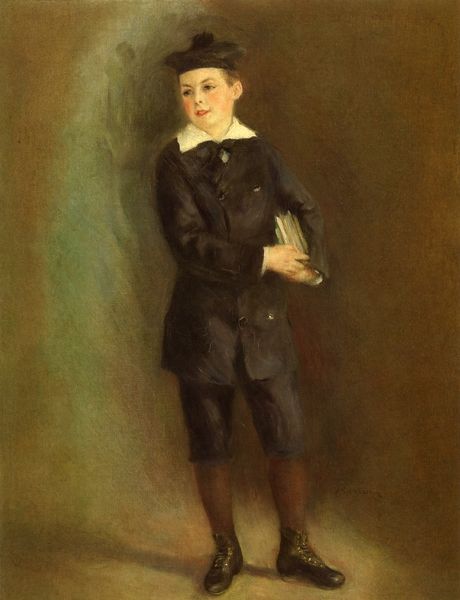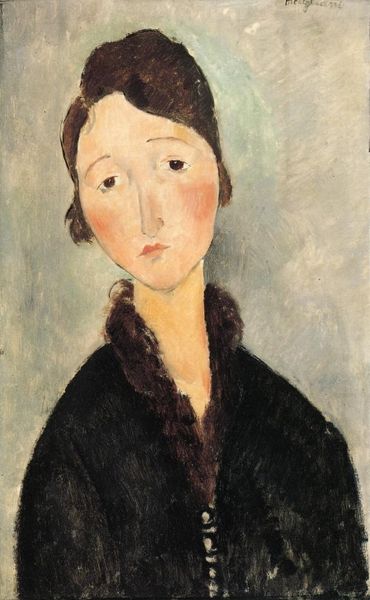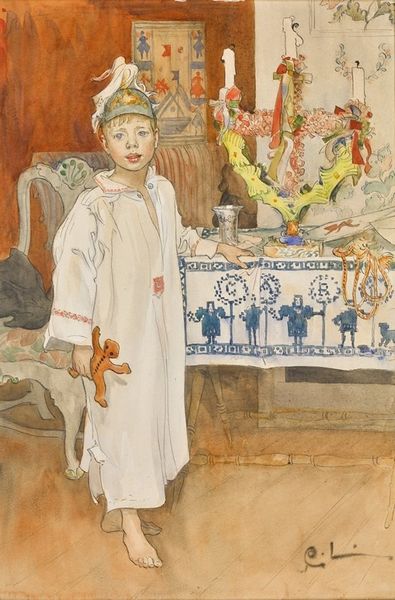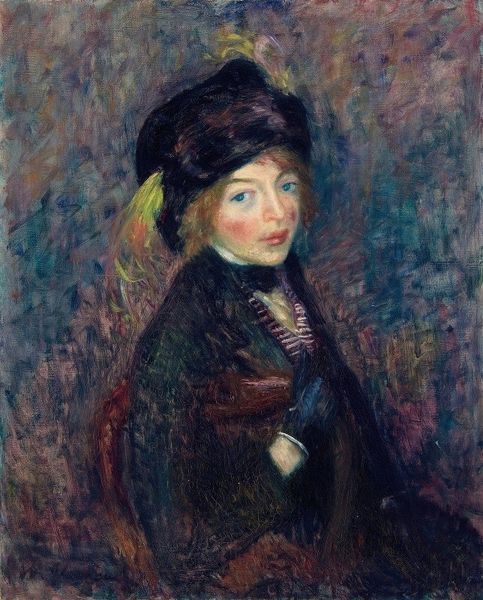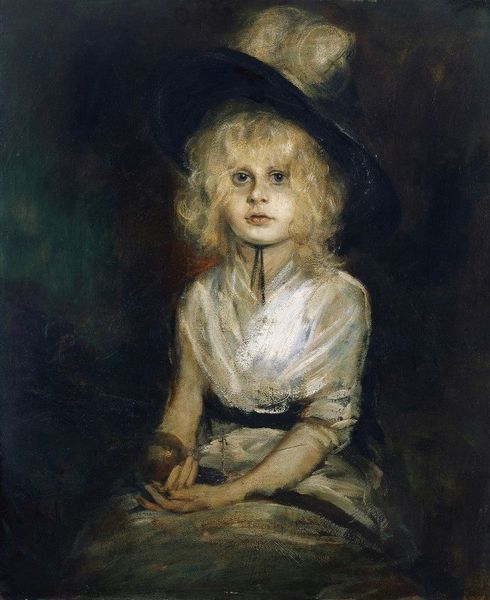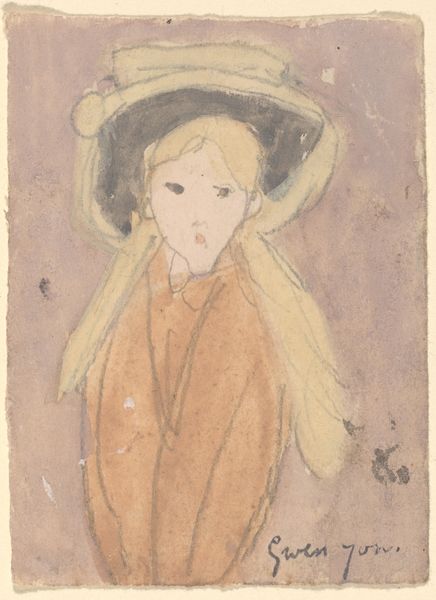
Dimensions: 130 x 97 cm
Copyright: Pablo Picasso,Fair Use
Editor: This is “Portrait of Paulo as Pierrot” by Picasso, created in 1929 using watercolor. There's something so innocent yet unsettling about the child’s gaze and costume. How do you interpret this work? Curator: For me, it begins with considering Picasso’s process. Watercolor, a traditionally 'minor' medium, speaks to a fluidity and perhaps even an economy. Was this dictated by circumstances? Did the lightness of watercolor reflect a desired lightness of subject, masking deeper familial or social pressures? Look at the Pierrot costume – a marker of the commedia dell'arte, yes, but also a ready-made garment, easily reproduced. Where was this made? In a factory, or by a family member? Editor: That's a great point about the 'minor' medium. It almost seems intentionally at odds with Picasso's status. So, you see the materials themselves as indicators of some socio-economic context? Curator: Precisely. We must interrogate the means of production, the conditions surrounding its creation. The blue buttons on the costume, seemingly innocent, were likely mass produced. What implications did this mechanized production hold for artistic creation and consumption at the time? Editor: I hadn’t considered that angle at all. Focusing on the materials and production opens up so many questions. Curator: It's crucial to consider not just what the artwork depicts, but also how it was made, where its components came from, and what impact that has on our understanding of the final product. How readily available these items became speaks to the dawn of a mass consumption, reflecting changing social values. Editor: I'll definitely look at artworks differently now. Thanks! Curator: My pleasure! Never underestimate the power of materiality to unlock new meanings.
Comments
No comments
Be the first to comment and join the conversation on the ultimate creative platform.

